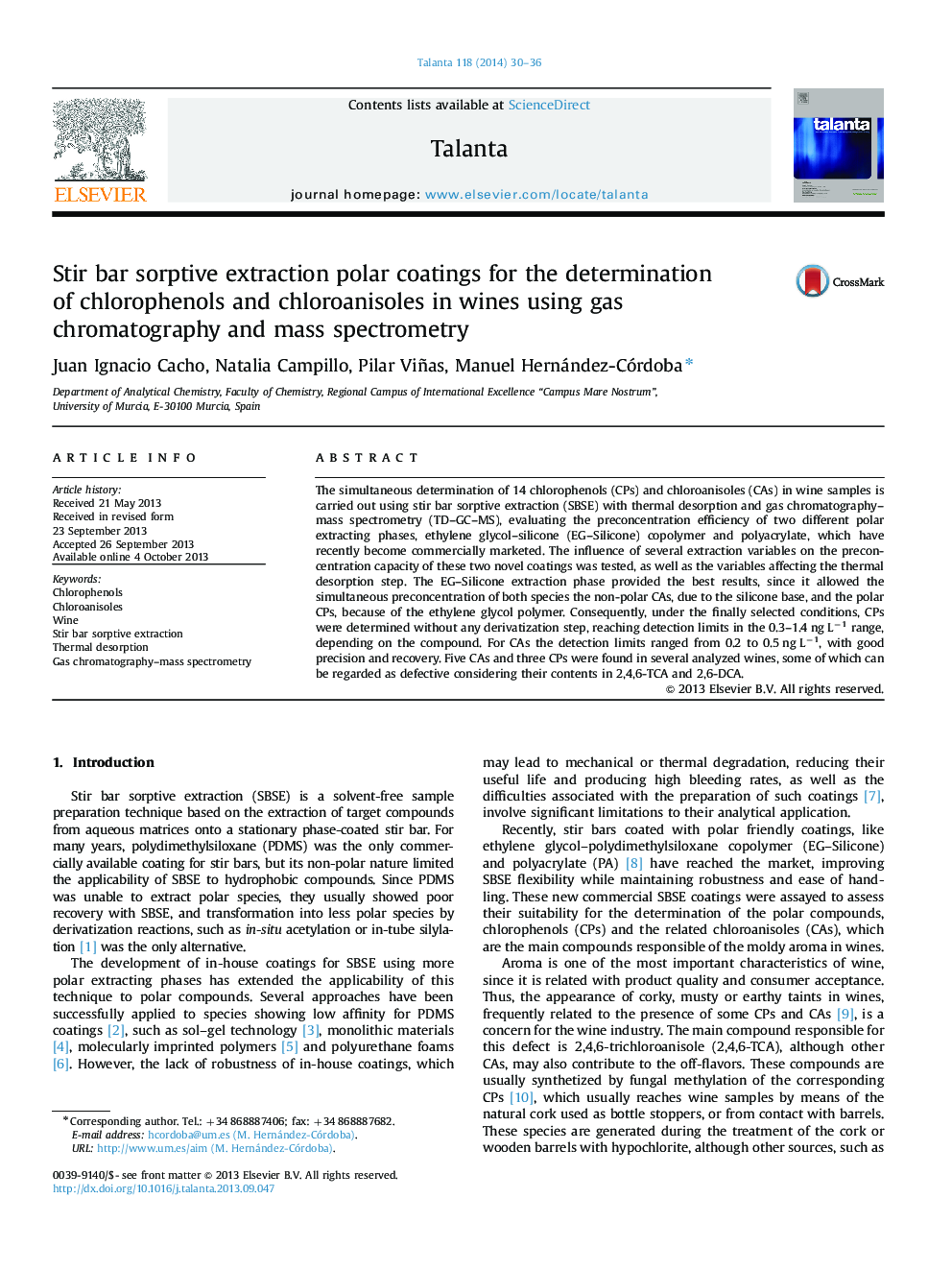| Article ID | Journal | Published Year | Pages | File Type |
|---|---|---|---|---|
| 1242086 | Talanta | 2014 | 7 Pages |
•Fourteen analytes are measured in wine samples.•The performances of two polar stir bar coatings are compared.•No derivatization stage is required.•Very low concentrations of chlorophenols and chloroanisoles can be measured.
The simultaneous determination of 14 chlorophenols (CPs) and chloroanisoles (CAs) in wine samples is carried out using stir bar sorptive extraction (SBSE) with thermal desorption and gas chromatography–mass spectrometry (TD–GC–MS), evaluating the preconcentration efficiency of two different polar extracting phases, ethylene glycol–silicone (EG–Silicone) copolymer and polyacrylate, which have recently become commercially marketed. The influence of several extraction variables on the preconcentration capacity of these two novel coatings was tested, as well as the variables affecting the thermal desorption step. The EG–Silicone extraction phase provided the best results, since it allowed the simultaneous preconcentration of both species the non-polar CAs, due to the silicone base, and the polar CPs, because of the ethylene glycol polymer. Consequently, under the finally selected conditions, CPs were determined without any derivatization step, reaching detection limits in the 0.3–1.4 ng L−1 range, depending on the compound. For CAs the detection limits ranged from 0.2 to 0.5 ng L−1, with good precision and recovery. Five CAs and three CPs were found in several analyzed wines, some of which can be regarded as defective considering their contents in 2,4,6-TCA and 2,6-DCA.
